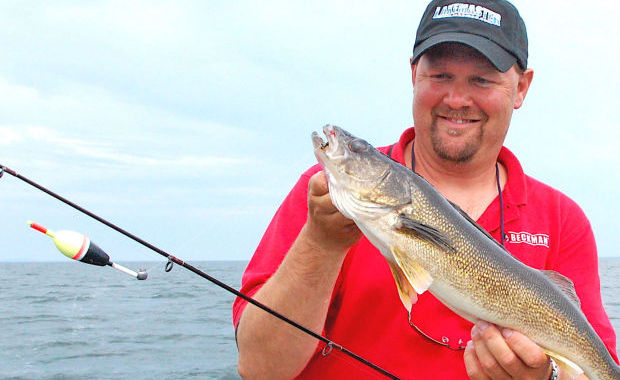We all remember bobber fishing, how we fished when we were youngsters, you would snap a plastic bobber onto the line at the depth you want your bait to be. You would cast it out and when the bobber goes under the water, you set the hook.
It was a great way to catch fish, at times a real pain as your hook, weight and bait would tangle up with your bobber.
You’re probably wondering why I’m writing about bobber or float fishing? Everyone knows about bobber fishing, right!
It really does not take a nuclear scientist to figure out this fishing method. This is true but there are several problems with this type of bobber fishing, especially if you are fishing deep water.
First off when your bobber or float as they’re called today is set at six or seven feet, it’s darn near impossible to cast without bouncing the bobber off your fishing partners head or piercing your ear with the hook.
Secondly, once you have reeled the bobber up to your rod tip, you’ve still have six or seven foot of line and your fish dangling below the bobber.
With the really tough part being, how can you land or net a fish at the end of that six or seven feet unless your net man has super long arms or at least a net with nine foot of handle!
Slip bobbers have solved these problems allowing you to fish areas that you were not able to fish with the old style bobbers!
They allow you to fish for suspended fish at any depth and not have to worry about the bobber being “attached” several feet above your hook. These bobbers slide down against the weight, jig or hook allowing the angler to cast the line with ease.
Slip bobbers are simple to use; they slip or slide up and down your line until stopped by the bobber stop.
The stop is adjustable, sliding up and down allowing you to set it at any depth and small enough to allow you to reel it up into your reel.
These bobbers’ stops are simple. They can be fancy or as simple as braided line or rubber band tied around the line.
Attaching the rig below the slip bobber is also very simple. You can use a small jig or a small hook along with a split shot. Attach a leech, minnow or crawler and you are in business.
With slip bobbers, you can fish at all depths over deep or shallow water structure. Walleyes feeding on top of a submerged island, rock bed or sandbars are perfect examples of structure fished using a slip bobber.
You can set your slip bobber allowing it to float just above the structure, your bait will drift or work it’s way across the structure, right in the face of those fish moving up to feed.
If you had tried fishing this area with a jig or other live bait rig, you could end being snagged up much of the time. 
Another place where slip bobbers work well is in an area that has a lot of rocks, snags or debris with current. One of these areas would be the fast water coming out of the turbines below a dam.
Using your locator, look the area over, find the average depth of the water you will be fishing and set your slip bobber just above that depth. Cast your rig out and let your bait drift through the area.
If there are any active fish holding in the rocks and rubble below the turbines, they’ll come up from below to take your bait.
Fast water areas below a dam are areas that hold good numbers of fish, but will eat up any other tackle that you might throw at the fish.
As with any bobber, you want to have as little of the bobber showing above the water as possible.
You can accomplish this by adding just enough weight so the very tip of the bobber shows above the surface.
With the bobber adjusted this way, fish can easily pull down the bait and bobber without feeling much resistance and are more apt to hold onto the bait.
The smaller the bobber the better, when it comes to slip bobbers, The K.I.S.S., method is best!
Keep It Simple Stupid may sound harsh, but like anything else, we have a tendency to make things way to complicated, as it takes all of the fun out of something that could be a real enjoyable family outing.
Try slip bobbers and in certain situations, you’ll find you’ll have more fish coming into the boat.
FISHING SMALL BODIES OR WATER BY gARY HOWEY
WHEN I FIRST MOVED INTO NEBRASKA AFTER I GOT OUT OF THE MILITARY, I DISCOVERED MOST OF THE ANGLERS DID THE MAJORITY OF THEIR FISHING ON THE...





0 Comments